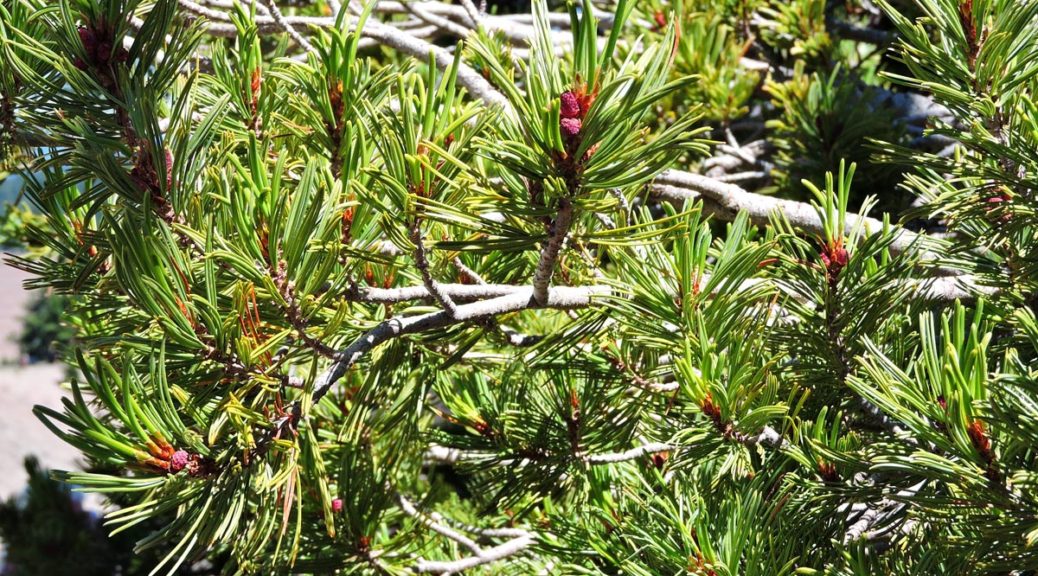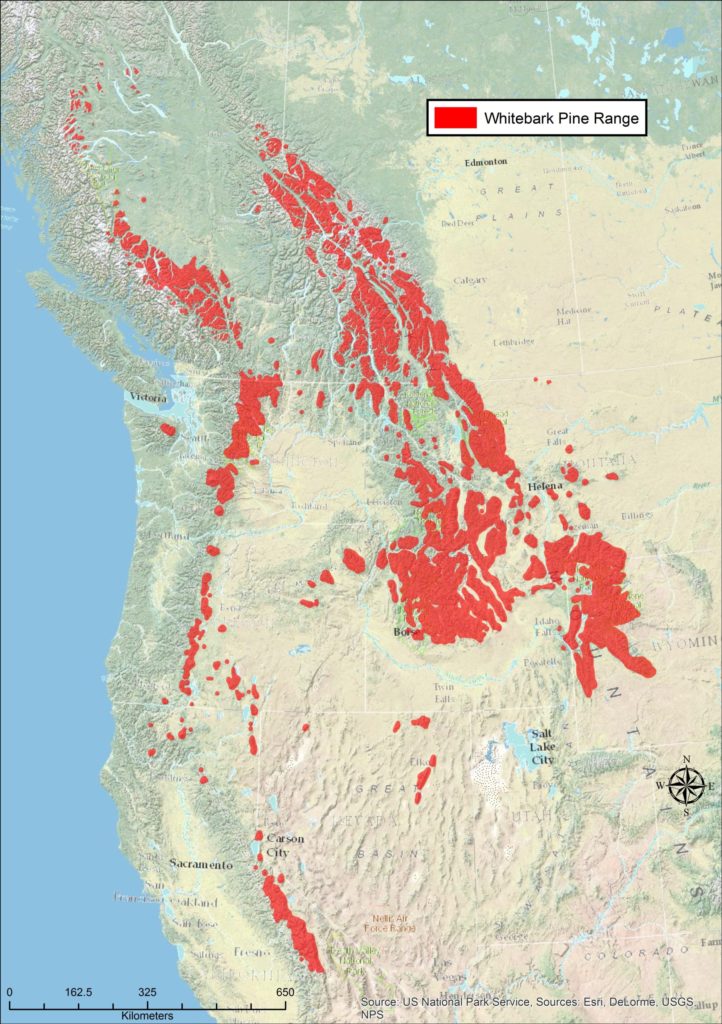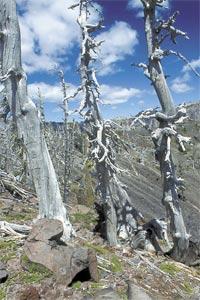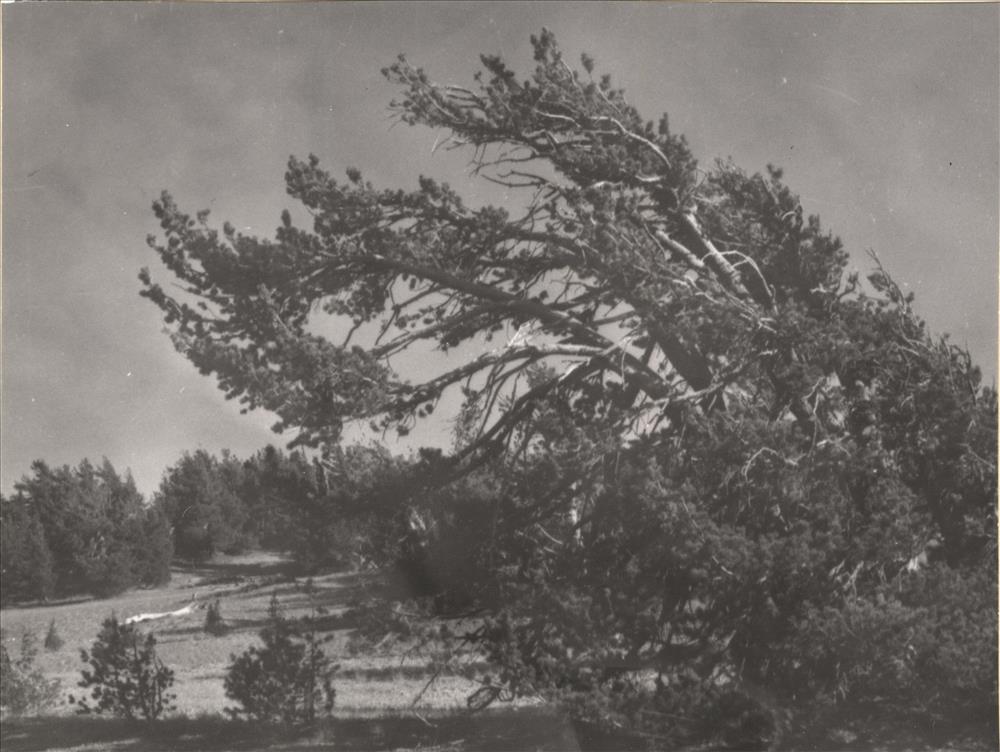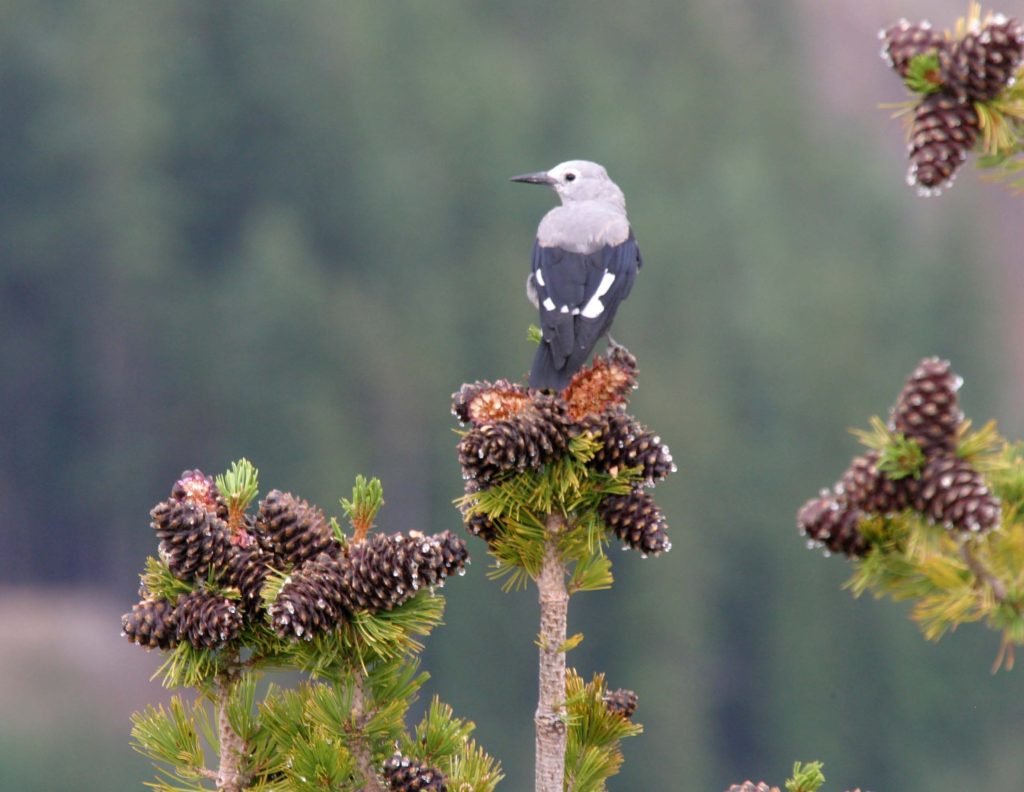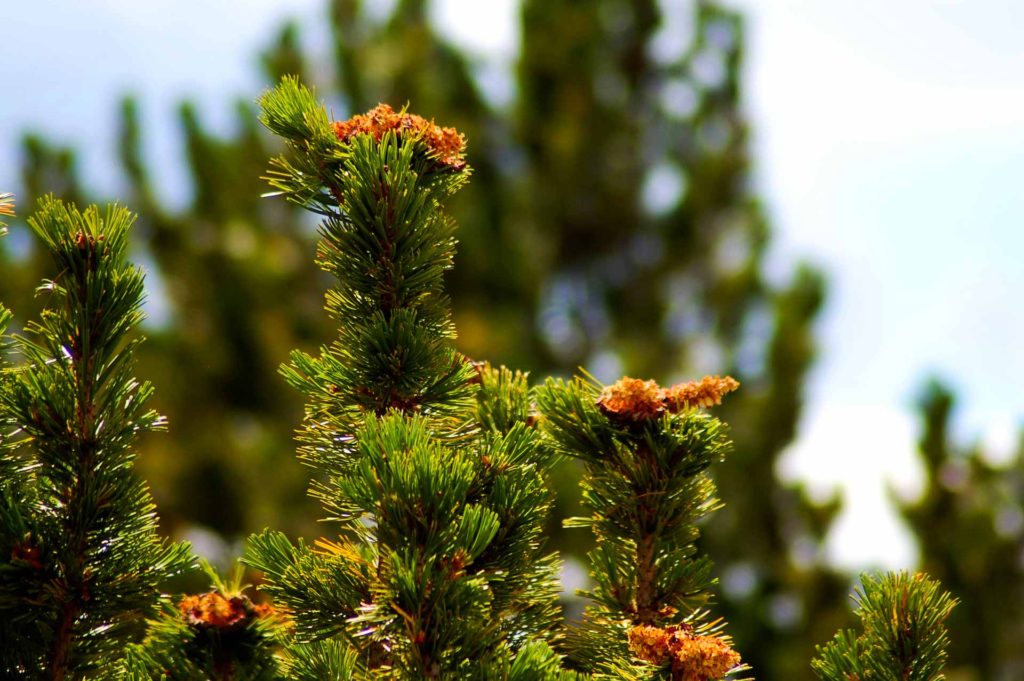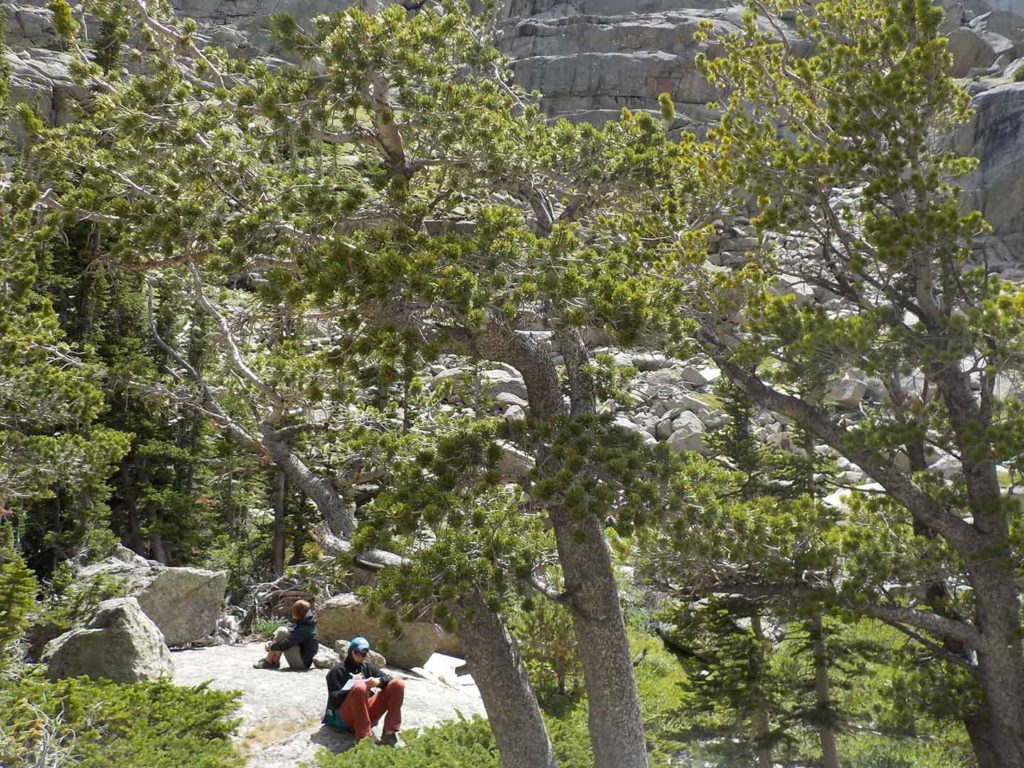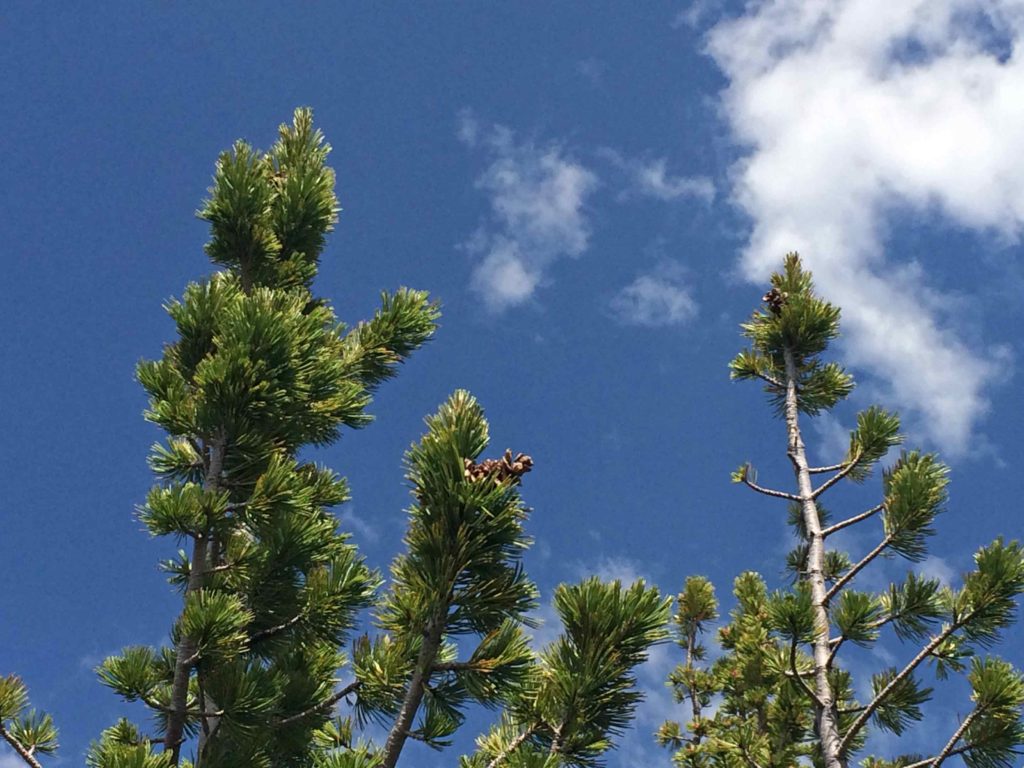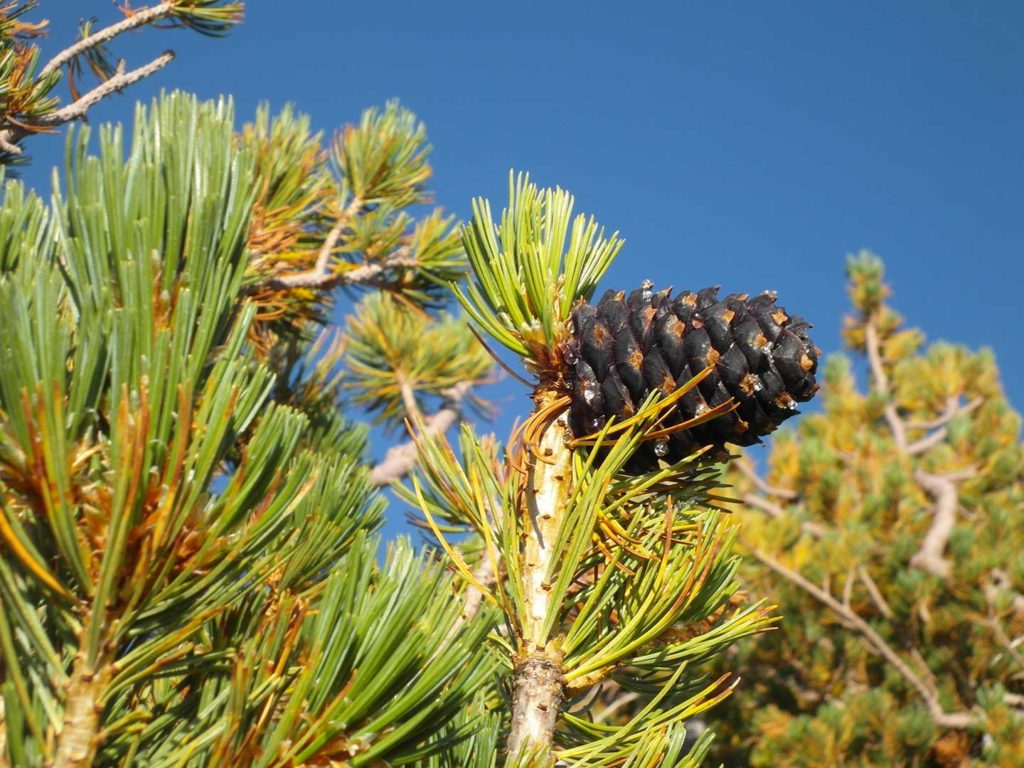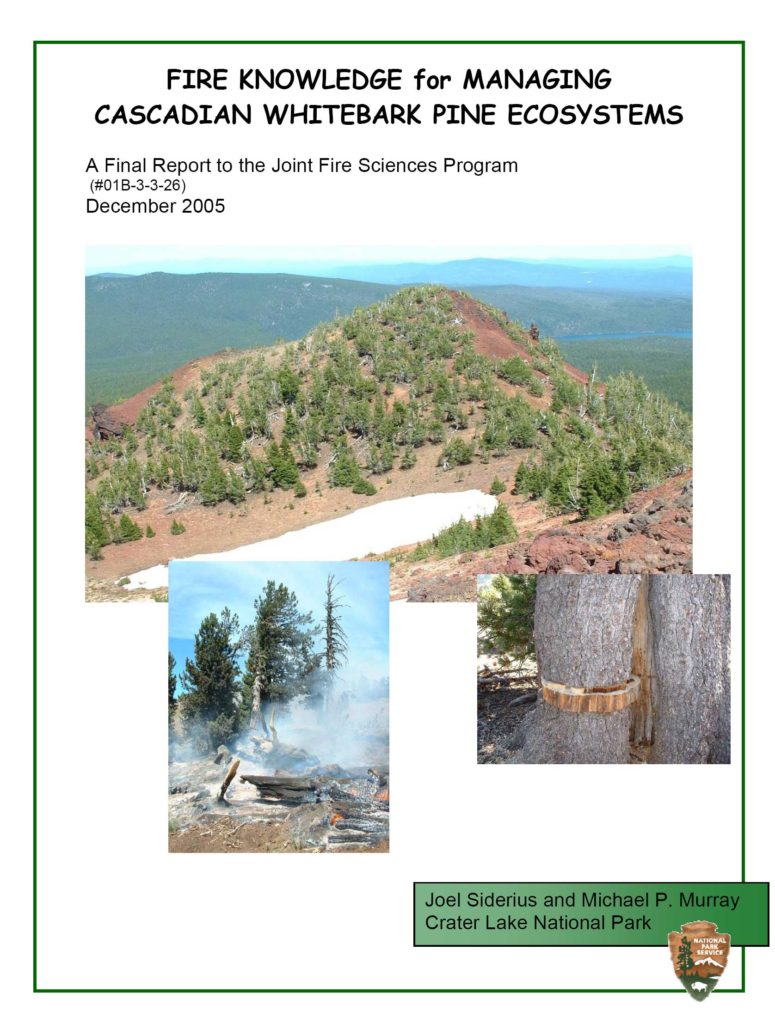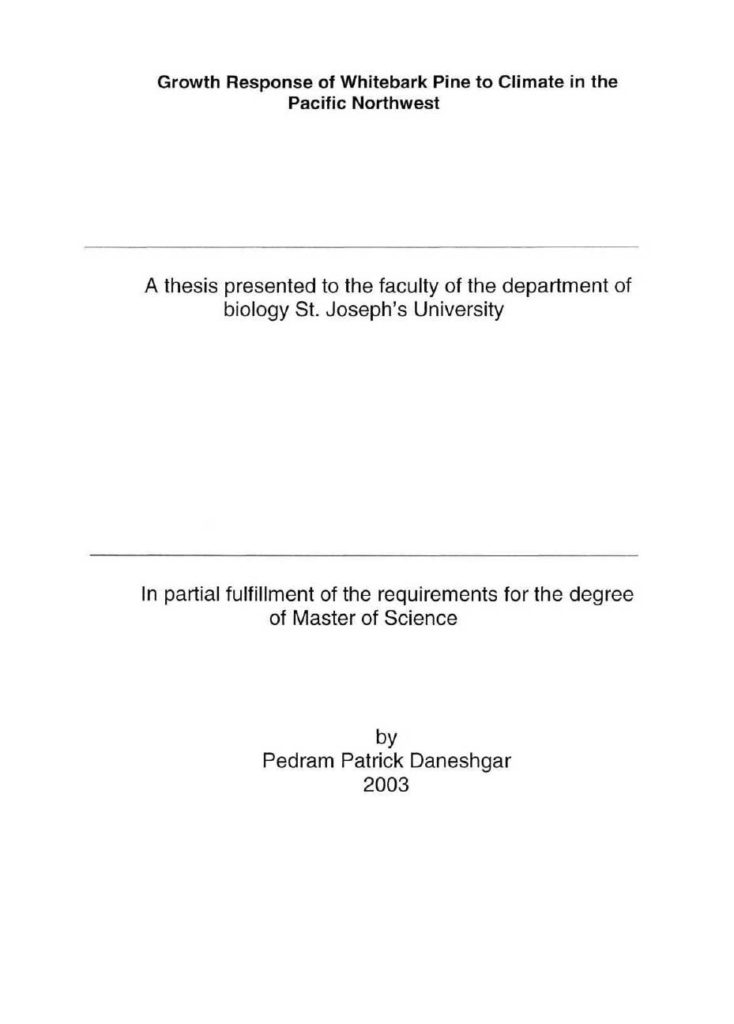[no_toc]
Crater Lake Institute is partnering with the Whitebark Pine Ecosystem Foundation
WhitebarkFound.org is a great place to start learning about these important and threatened trees. Much of the information in this section is gratefully shared from there.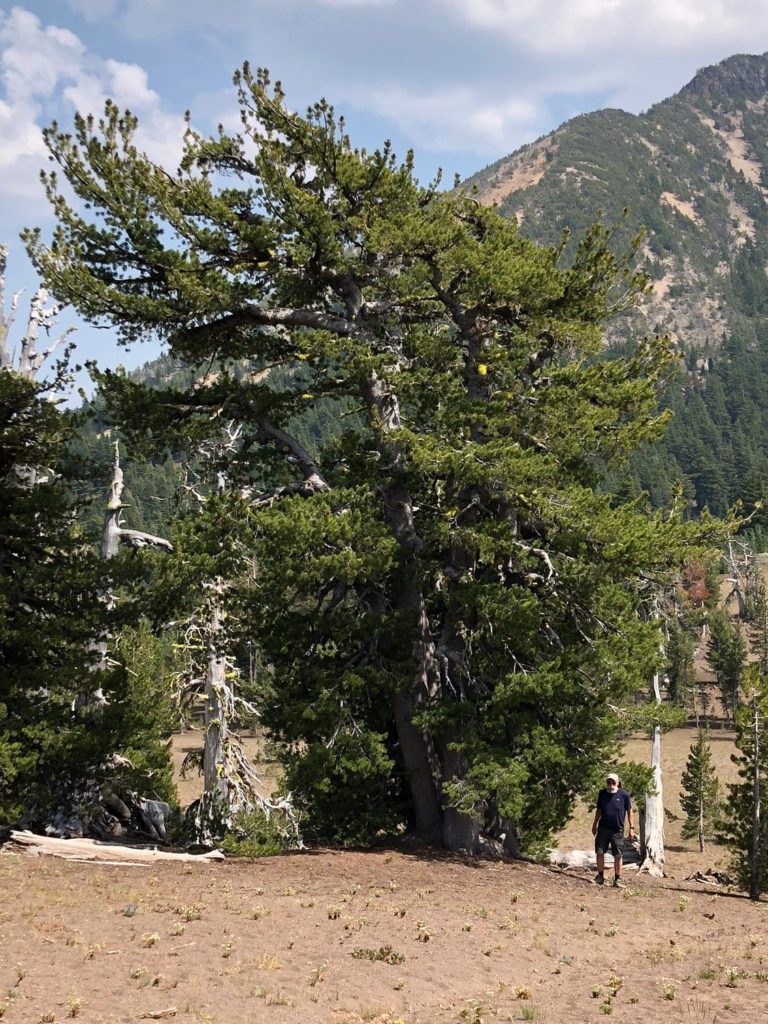
Our March 2021 Extraordinary Whitebark photo was taken by Art Zack in July 2018 in Crater Lake National Park. Art says, “I looked & didn’t see any sign of rust on this tree, although there was a lot of obvious blister rust on most WBP in the area.”
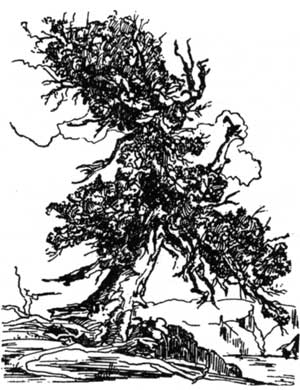
To begin, what follows is a brief introduction.
Walking through a whitebark pine forest in early fall, it is impossible not to feel a sense of awe. Clark’s nutcrackers noisily harvest seeds from deep purple cones that protrude outward from the upswept branches of majestic whitebark pines, their occasional noisy “kraa-kraa” resounds through the forest. Golden sunlight lights up drops of resin clinging to the cones. Whitebark pine stands are a part of some of the most beautiful high mountain landscapes in North America. In fall, these stands come alive with movement: Chickadees and nuthatches, woodpeckers and finches visit partly-opened cones; pine squirrels diligently cut down cones for their winter stores, and chipmunks climb about the canopy, competing with birds and squirrels for access to cones.
Now, however, for many visitors to whitebark’s habitat, awe is tempered by alarm and sadness. These majestic pines are in peril; trees with reddening dead foliage or lifeless grey skeletons replace the greenery, squirrel and nutcracker activity. (continued below)
Three threats act in synergy to cause this destruction: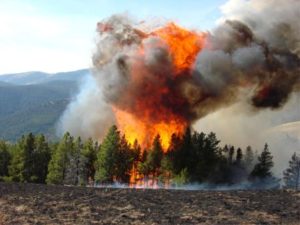
- an introduced fungal disease called white pine blister rust,
- outbreaks of mountain pine beetles, and
- increased competition from shade-loving trees caused by fire suppression (see Threats page).
A fourth threat looms over all: climate change, which will ultimately affect the distribution of all species, and is the likely driver behind current mountain pine beetle upsurges. The decline of whitebark pine is compounded by the loss of other forest components: wildlife, other flora, and water resources, which directly impacts humans.
Considered a keystone species (Tomback et al. 2001), whitebark pine communities comprise unique habitat types, with geographic and successional variation, and represent considerable biodiversity across the higher mountains of the U. S. and Canada (Tomback and Kendall 2001, Tomback and Achuff 2010). Whitebark pine is also a foundation species (Ellison et al. 2005), and as a dominant forest component in many regions, it stabilizes ecosystem function. Tolerant of the harshest conditions, whitebark pine grows at the highest treeline elevations; its canopies shade snowpack and protract snowmelt, thus regulating downstream flows; its roots stabilize soil, which reduces erosion, particularly on steep, rocky slopes. Thus, whitebark pine protects watersheds, which is important for both agricultural and drinking water.
Large, nutritious whitebark pine seeds are an important food-source for at least 13 species of birds in 6 families and 8 species of mammals in 3 families. These include Clark’s Nutcracker; many songbirds such as nuthatches, chickadees, woodpeckers, crossbills, and pine grosbeaks; ground squirrels, chipmunks, Douglas squirrels, and red squirrels; and grizzly and black bears (Tomback and Kendall 2001). Furthermore, whitebark pine forests provide food, shelter and nest sites for many more wildlife species, including deer, elk, grouse, and other game species, neotropical migrants, snowshoe hares, and birds of prey.
 Not only does whitebark pine provide nourishment and shelter for wildlife, it also facilitates ecosystem succession and the growth of other conifers. Whitebark pine seeds are dispersed by Clark’s nutcrackers, which harvest seeds from cones, transport seeds in a specialized sublingual (throat) pouch, and bury them in caches widely throughout mountain terrain (Tomback 1982, Hutchins and Lanner 1982). Because Clark’s nutcrackers frequently cache seeds in open and disturbed areas (Lanner and Vander Wall 1980; Tomback 1986) and its seedlings are hardy and drought tolerant (McCaughey and Tomback 2001), whitebark pine is a pioneer species after disturbances, especially fire. By colonizing disturbed areas, whitebark pine contributes to community development by acting as nurse tree, facilitating the growth of other establishing conifers and understory plants (Tomback et al. 2001). At treeline east of the continental divide in the northern Rocky Mountains, whitebark pine acts as a tree island initiator more often than any other conifer species (Resler and Tomback 2008), and facilitates colonization by other conifers on harsh sites, increasing both establishment and growth of late successional species (Callaway 1998).
Not only does whitebark pine provide nourishment and shelter for wildlife, it also facilitates ecosystem succession and the growth of other conifers. Whitebark pine seeds are dispersed by Clark’s nutcrackers, which harvest seeds from cones, transport seeds in a specialized sublingual (throat) pouch, and bury them in caches widely throughout mountain terrain (Tomback 1982, Hutchins and Lanner 1982). Because Clark’s nutcrackers frequently cache seeds in open and disturbed areas (Lanner and Vander Wall 1980; Tomback 1986) and its seedlings are hardy and drought tolerant (McCaughey and Tomback 2001), whitebark pine is a pioneer species after disturbances, especially fire. By colonizing disturbed areas, whitebark pine contributes to community development by acting as nurse tree, facilitating the growth of other establishing conifers and understory plants (Tomback et al. 2001). At treeline east of the continental divide in the northern Rocky Mountains, whitebark pine acts as a tree island initiator more often than any other conifer species (Resler and Tomback 2008), and facilitates colonization by other conifers on harsh sites, increasing both establishment and growth of late successional species (Callaway 1998).
The ecological importance of whitebark pine is augmented by the ecosystem services it provides to humans. As described above, whitebark pine plays an essential role in regulating runoff, enhancing and retaining snowpack, and reducing soil erosion. Because whitebark pine tolerates poor soils and harsh environmental conditions (Arno and Hoff 1990), it can grow in areas where the growth other conifers is limited or precluded. In these areas, tree roots hold soil and moisture, protecting soil from erosion and increasing water-holding capacity (Farnes 1990). Presence of whitebark pine causes local redistribution of snow, altering accumulation patterns, leading to higher snowpack retention. Shade provided by its broad canopies slows snowmelt, delaying and reducing peak runoff and augmenting mid- and late-summer stream flow (Farnes 1990). Perhaps most important from an anthropomorphic standpoint are the changes in hydrology that could occur with the loss of whitebark pine, such as changes in snow accumulation and melt patterns, as well as run-off volume and timing. Snowmelt would occur more quickly, potentially causing downstream flooding, changing peak runoff timing, increasing soil erosion and decreasing summer flows (Farnes 1990). All of these effects would significantly impact water for ranching and agriculture and drinking water sources for many regions in the western United States and Canada.
Whitebark pine ecosystems are highly valued as recreational destinations. Because of its ability to grow under harsh conditions where other trees may be rare, whitebark pines remind us that life often persists despite constant struggle. These hardy trees seem symbolic of the adversity that human’s face in life and connect people to the wild. Tomback and Acuff (2010) note “our natural world would be spiritually impoverished without the white pine gate-keepers of forests and treelines.”
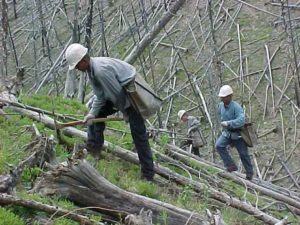 The conservation and restoration of whitebark pine is paramount if we are to sustain these ecologically important and diverse ecosystems (Tomback et al. 2011). Many of today’s whitebark pine stands have greatly increased mortality, and decreased seed production, consequently, diminishing nutcracker seed dispersal (McKinney et al. 2009, Barringer et al. 2012). This suggests that without human intervention, whitebark pine may become functionally extinct throughout much of its range, threatening the long-term persistence of these valuable ecosystems (MacDonald and Hoff 2001, Tomback and Achuff 2010). Already, functional whitebark pine ecosystems are rare in the Crown of the Continent (Northern Divide) of the Rocky Mountains, where outstanding high mountain landscapes such as Glacier National Park and the Bob Marshall Wilderness Area are losing their whitebark pine. Extirpation of whitebark pine will cause major loss of the ecosystem services they provide, ultimately impacting humans (Tomback and Kendall 2001, Tomback and Achuff 2010).
The conservation and restoration of whitebark pine is paramount if we are to sustain these ecologically important and diverse ecosystems (Tomback et al. 2011). Many of today’s whitebark pine stands have greatly increased mortality, and decreased seed production, consequently, diminishing nutcracker seed dispersal (McKinney et al. 2009, Barringer et al. 2012). This suggests that without human intervention, whitebark pine may become functionally extinct throughout much of its range, threatening the long-term persistence of these valuable ecosystems (MacDonald and Hoff 2001, Tomback and Achuff 2010). Already, functional whitebark pine ecosystems are rare in the Crown of the Continent (Northern Divide) of the Rocky Mountains, where outstanding high mountain landscapes such as Glacier National Park and the Bob Marshall Wilderness Area are losing their whitebark pine. Extirpation of whitebark pine will cause major loss of the ecosystem services they provide, ultimately impacting humans (Tomback and Kendall 2001, Tomback and Achuff 2010).
Because whitebark pine seeds are valued as a food source for many types of wildlife, and the forests themselves provide shelter for many other species, its loss has the potential to greatly decrease the biodiversity of these ecosystems (Tomback and Kendall 2001), decreasing both species richness and abundance within these high mountain forests. Its ability to grow where other conifers cannot suggests that loss of whitebark pine would result in a loss of total forested area. An increase in forest homogeneity is predicted to cause significant changes in fire regimes, causing larger and more frequent stand replacing fires (Keane 2001). Other plant species would suffer decreased establishment due to lack of suitable nurse objects, further reducing biodiversity (Kendall and Tomback 2001). Treeline in areas where whitebark pine facilitates tree island development would lose resilience with diminished ability to respond to climate change (Tomback and Resler 2007).
Efforts to conserve and restore whitebark pine have begun (see Restoration), but the long-term survival of these ecosystems is dependent upon our ability to convince others that restoring whitebark pine communities has high priority in our stewardship agenda. First of all, we need to be very vocal in explaining how much we lose as whitebark pine is extirpated in more and more places. Secondly, the immensity of the loss needs to be communicated: How can we in good faith allow a widespread forest tree living places remote from human development, that is the keystone to both geographically and ecologically diverse communities and a web of intricate ecological relationships, with one of the most fascinating ecological and evolutionary histories – to “go down”?!? The Whitebark Pine Ecosystem Foundation is doing everything it can to prevent this from happening. We need your support!
